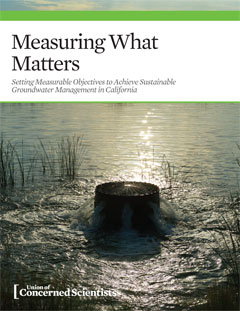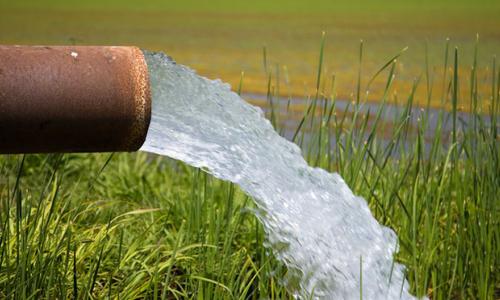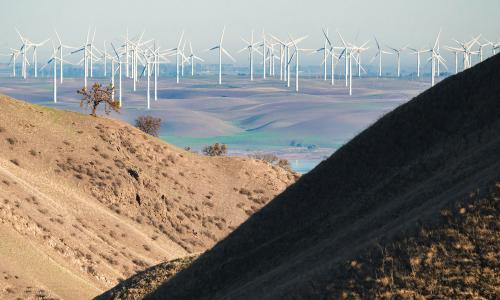Groundwater is a critical resource for California. It provides a crucial buffer against drought and the growing impacts of global warming, especially the diminishing mountain snowpack that has historically been a crucial component of California's water supply.
Over the last century, however, groundwater in California has been largely unregulated. This has led to severe declines in groundwater levels in many places, particularly California's Central Valley.
In 2014, California’s severe and ongoing drought helped spur the passage of the Sustainable Groundwater Management Act, the first-ever statewide effort to comprehensively measure and manage groundwater.
Defining and measuring sustainable groundwater levels
One of the act's key provisions is that local groundwater sustainability agencies (GSAs) must develop Groundwater Sustainability Plans (GSPs) by 2020.
As part of this, GSAs must set “measurable objectives” in their plans to achieve “the sustainability goal for the basin.” Yet the legislation does not specifically define measurable objectives or how they should be set or evaluated over time. Rather, the legislation directs GSAs to set measurable objectives that will avoid what the act refers to as “undesirable results” (such as the chronic lowering of groundwater levels).
To understand how GSAs might develop effective measurable objectives and to inform the GSP regulations currently under development by the Department of Water Resources (DWR), this report provides a review of the state of knowledge and practice related to setting measurable objectives for groundwater management.
This review indicates that effective measurable objectives do the following:
- Define clear baselines: In order to understand how to get to where you are going, you must know where you have been. Clear baselines can help ensure fairness and transparency and avoid unnecessary conflict arising due to different definitions of the starting point for management.
- Set quantitative thresholds: Objectives should be measurable and quantitative for two purposes: first, so progress can be assessed; second, so performance that deviates from objectives can prompt a change in management. When a monitored variable approaches or crosses its threshold, a management entity may respond with a variety of reasonable actions to reverse the trend to avoid unacceptable outcomes.
- Develop protective triggers: Triggers act as a warning system, ensuring that a threshold is not crossed.
- Incorporate regular measurement and monitoring: Monitoring, and learning from what is found, is what fundamentally differentiates adaptive management from trial and error.
- Account for uncertainty: Although uncertainty is inherent in any long-term planning process, it is critical that management entities explicitly account for uncertainty and develop a suite of proactive responses to improve or bracket information.
- Adapt to changing conditions and knowledge: Adaptive management is a process centered on learning, in which natural resource management actions are taken not only to manage, but also explicitly to learn about the processes affecting the system.
Toward a common understanding: Recommendations for the state's role in sustainable groundwater management
The challenges involved in implementing sustainable groundwater programs are significant—for the state, in putting forward a framework that promotes consistent standards and approaches while allowing (where necessary) for local flexibility, and for each GSA, in understanding and then effectively managing its groundwater usage to avoid undesirable results and achieve sustainable yield.
To inform California's approach to defining measurable objectives, the report outlines the following recommendations:
- Develop a state framework. There is need for a common framework for setting thresholds and interim milestones. This framework must rely on state standards and policies where they exist and create common rules and methodologies where there are no state standards (and where basins have great flexibility for setting thresholds).
- Identify existing data sources for basin conditions. The state has an important role to play in identifying existing data sources that should be used in GSPs. It also should lead efforts to improve groundwater data and monitoring networks where data gaps or inconsistencies currently exist. In order to treat all basins fairly, the state should require that basins have access to some consistent data when assessing their groundwater conditions over time.
- Require consistent assumptions to develop sustainable yield. The act requires that basins achieve a sustainable yield by 2040; thus, most basins will use models to project how changing land and water uses, management approaches, and other factors will affect the basin’s water budget. Because assumptions drive modeling efforts, it will be critical for the state to define some common assumptions for use when developing sustainable yield.
- Develop common metrics and consistent data management and reporting protocols. Local agencies need state guidance to ensure that basins are using some common metrics to describe undesirable results and are reporting information in a standardized manner to support improved interbasin and intrabasin coordination as well as to protect all basin water users.






